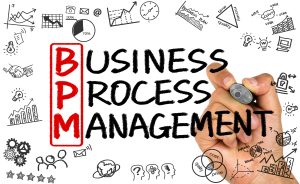
The Point
Why approach the contracting function as a form of business process management? Two reasons.
First, efficient contracting drives — and ad hoc contracting impedes — cash flow. By making the order-to-cash cycle fast or slow.
Second, efficient contracting enables quick action — and ad hoc contracting creates roadblocks — in any operation where the company collaborates with, or marshals the resources of, a party outside of the business.
That’s from a business process management vantage point, at least. But there’s another approach to contracting: that of lawyers.
From law school, law firm experience, and in-house counsel practice, their view of contracting centers on a request to an attorney, writing a document, deliberation between business person and attorney on terms, then negotiating with the third party about terms, signing the paperwork, and then putting the contract is a file of some kind.
This ad hoc sequence is not a “business process”. And, of course, it’s not efficient at all.
This Matters to Your Business
In February 2023, it’s important to know two things about the state of contracting (often called “contract lifecycle management”):
First, contract automation — including “contract lifecycle management (CLM)” — is one of the hottest areas of legal technology right now. There’s pretty much a consensus that some measure of automation is needed. But there’s controversy over whether or not the comprehensive platforms of CLM systems are cost-effective, or even operationally feasible.
Second, the present-tense reality of contracting, in the vast majority of corporate enterprises, is … it’s a real challenge. Or, depending on how diplomatic you feel, it’s a “work-in-progress”. More bluntly, in too many companies, it’s simply a mess:
- Just getting one’s hands on a contract takes some doing. As does figuring out if you’ve found the most recent version of the agreement you’re concerned with.
- Then there’s the need to keep track of contract terms — whether by visual inspection of documents or digitally: to what extent do they limit the corporation’s actions? Is there a renewal deadline to meet? Do new regulatory developments render an existing agreement illegal?
- As to creating a new contract, to what extent are front line employees required to seek out in-house or law firm counsel to do this? To what extent has corporate Legal embedded its sound legal advice in forms or templates that business folks can use without the mother-may-I step of actually getting a real-time OK from a lawyer?
- Do vendors or other counter-parties in your contracting understand terms of your agreements? Or do those terms skew expectations so as to risk future lawsuits?
Because …
Nothing in their law school training or on-the-job experience prepares attorneys to design and implement business processes. So instead of managing such processes into disciplined systems (whether automated or not), Legal’s typical response to the above four questions is the ad hoc sequence described above.
I’ve adopted the view of Alex Hamilton, founder of Radiant Law, who recommends an iterative approach to creating contract management processes, rather than all-at-once deployment of a big-bang comprehensive CLM system:
“There are three things you need to do. It’s really simple. You have got to make it a repeatable process. You put some basic automation in place … And then it’s all refinement after that, it’s continuous improvement.”
World Commerce & Contracting reports that bad contract management causes, on average, loss of 9.2% of a company’s annual revenue, and 15% on large capital projects.
 Managing Legal
Managing Legal


